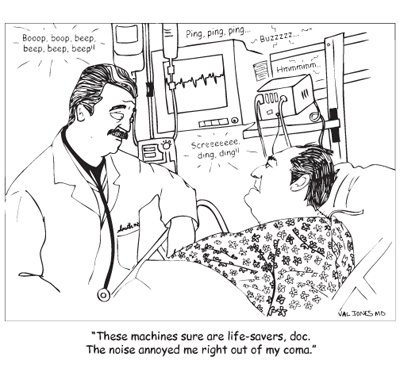January 25th, 2011 by admin in Better Health Network, Health Tips
No Comments »

This is a guest post by Dr. Barbara Okun and Dr. Joseph Nowinski.
***********
End-Of-Life Planning Makes It Easier To Say Goodbye
Saying goodbye as the end of life approaches can be difficult, even for those with a gift for words. In a moving account in a recent issue of The New Yorker, writer Joyce Carol Oates describes the last week of her 49-year marriage, as her husband was dying from complications of pneumonia. Like A Year of Magical Thinking, Joan Didion’s poignant memoir of her husband’s sudden death and its aftermath, Oates’ essay highlights the need for each of us to think about death and dying — and discuss them with loved ones — long before they become a likelihood.
In our work with individuals and families facing death, we have seen too many people miss the opportunity to say goodbye because they avoid what feels like a scary or taboo topic: What do I want to happen when I die? Beginning this discussion early, preferably while you are in good health, can help pave the way for a “good death.” In our new book, Saying Goodbye: How Families Can Find Renewal Through Loss, we offer a guide to help individuals facing a terminal illness and their families navigate the realities of death and dying. Planning ahead is essential. Here are some suggestions for doing that:
Choose your team. Identify support people and specialists (legal, medical, financial, religious) you can count on to advocate for you and help you make decisions. Designate these people to act for you by signing advance medical directives. Read more »
*This blog post was originally published at Harvard Health Blog*
January 23rd, 2011 by admin in Opinion, True Stories
No Comments »

This is a guest post by Dr. John Schumann.
**********
In 2011, the first wave of baby boomers will turn 65 years old. Sixty-five still has currency because that’s the age at which non-disabled Americans are eligible to be covered under the Medicare program (now itself having reached middle age).
As our economy continues to recover (hopefully) from the Great Recession, the entrance of millions of Americans to the Medicare rolls over the next decade and a half will be a formidable planning challenge. Look at this chart to see how the baby boomers population has surged:

So is the promise of healthcare reform (the “PPACA“), which will enlarge Medicaid by an additional 16 million Americans — about half of the projected growth in coverage for those currently uninsured.
A couple of recent patient encounters got me thinking about these phenomena, and how we are very much in historically uncharted territory. Never have we had so many living so well for so long. We have an entire generation of people reaching “seniority” who will continue to want the most out of life, without many guideposts on how to achieve it. Read more »
*This blog post was originally published at ACP Internist*
January 22nd, 2011 by admin in Opinion, True Stories
1 Comment »
 This is a guest post from Dr. Steven Reznick.
This is a guest post from Dr. Steven Reznick.
**********
Patient Advocacy: It’s Worth The Effort
I have a 61-year-old patient who has been seen in my practice for over thirty years. When she first started developing strange aches and pains as well as abdominal symptoms, her evaluation turned up nothing. At that point she was very active: Playing ball with her two growing sons and dancing the nights away wearing out dance partner after dance partner at community social functions.
When I could not determine the cause of her ills, I asked for help at reputable places including the University of Miami rheumatology division and gastroenterology division. Like so many illnesses, the disease remained a mystery until it was ready to show itself and until technology and progress developed diagnostic tools to allow us to see what is actually there. With the help of a brilliant local gastroenterologist and rheumatologist, and after trips to Johns Hopkins Medical Center and the Mayo Clinic, collagenous colitis and sarcoidosis were documented. In the interim, local medical doctors and her friends branded this poor woman as “another neurotic spouse of a doctor who liked narcotics.”
She developed a peripheral neuropathy, which meant her feet and legs hurt all the time with burning/shooting discomfort exacerbated by walking. She went from dancing the Lindy to hobbling with the assistance of her husband, and a cane from the bedroom to her kitchen. She would then have to sit down, massage her legs, and put on thick-cushioned sweat socks to tolerate the foot and leg discomfort. Read more »
January 14th, 2011 by admin in Health Tips, News, Video
No Comments »
 This is a guest post from Dr. Mary Lynn McPherson.
This is a guest post from Dr. Mary Lynn McPherson.
**********
FDA Restricts Acetaminophen In Popular Pain Medications
The Food and Drug Administration (FDA) made an announcement yesterday that affects one of the most common pain medications on the market, and as a consequence may affect countless numbers of the 75 million Americans who experience chronic pain (for perspective, that’s more than the number of people suffering from cancer, heart disease and diabetes combined.) The FDA has asked manufacturers of popular prescription pain medications like Vicodin or Percocet to limit the amount of acetaminophen (also known as Tylenol, or APAP) used in these drugs to no more than 325 milligrams per tablet — the equivalent of one regular-strength Tylenol tablet.
The move came because research has shown that acetaminophen can cause liver damage when taken in higher than recommended doses. The problem is that many over-the-counter medications ALSO contain acetaminophen, and patients may take one or more of these common products (like Tylenol) to reduce their fever or get rid of a headache along with their prescription pain relievers.
Before you know it, you could be taking more than the maximum daily dose of acetaminophen which is 4,000 milligrams. I go out of my way to advise people I work with of this warning, but not everyone takes time to talk to the pharmacist and not all pharmacists make themselves readily available. That is why it is critically important that you talk to your pharmacist to make sure that you are not taking more than this amount. The pharmacist is the last stop between you and medication misuse — you could be taking a medication that contains acetaminophen and not even know it. Read more »
January 11th, 2011 by admin in Health Tips
1 Comment »
 This is a guest post from Dr. Anita Gupta.
This is a guest post from Dr. Anita Gupta.
**********
How To Have A Pain-Free Hospital Stay
Too often patients feel like they’re in the passenger seat when entering the hospital. Even in the best of circumstances — such as planned admissions — patients often don’t feel in control of their own care.
One of the most unnecessary issues facing patients when they enter the hospital is untreated (or undertreated) pain. Often the focus of the medical team is to treat a condition, and controlling a patient’s pain comes second. Fortunately, this doesn’t need to be the situation. Here are a few tips for patients to ensure that their pain does not go overlooked:
— Let someone know if you are in pain. This may seem obvious, but patients often hesitate to question their doctor. Pain control during your hospital stay is not a luxury, and you need to know you have a right to pain control during your stay. If you doctor or nurse is not answering your questions regarding pain, ask to see pain specialist who will likely address your concerns as well as the concerns of the doctors and nurses taking care of you. Unfortunately when it comes to treating pain, not all doctors are trained equally.
— Have a family member or good friend to act as your advocate. Have this individual get involved in your medical care and act on your behalf during your hospitalization. Read more »





 This is a guest post from Dr. Steven Reznick.
This is a guest post from Dr. Steven Reznick. This is a guest post from Dr. Anita Gupta.
This is a guest post from Dr. Anita Gupta.







